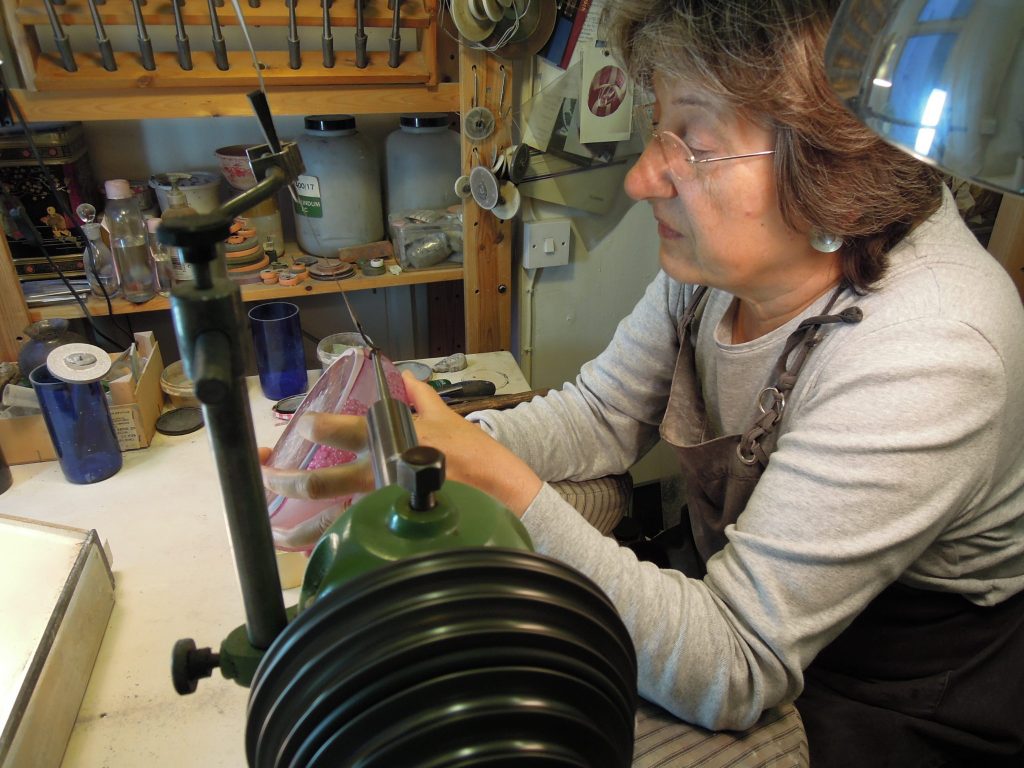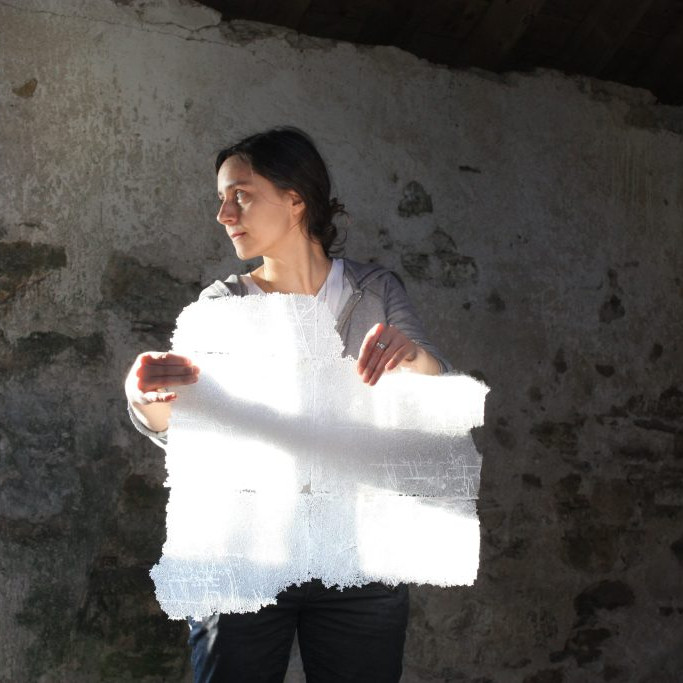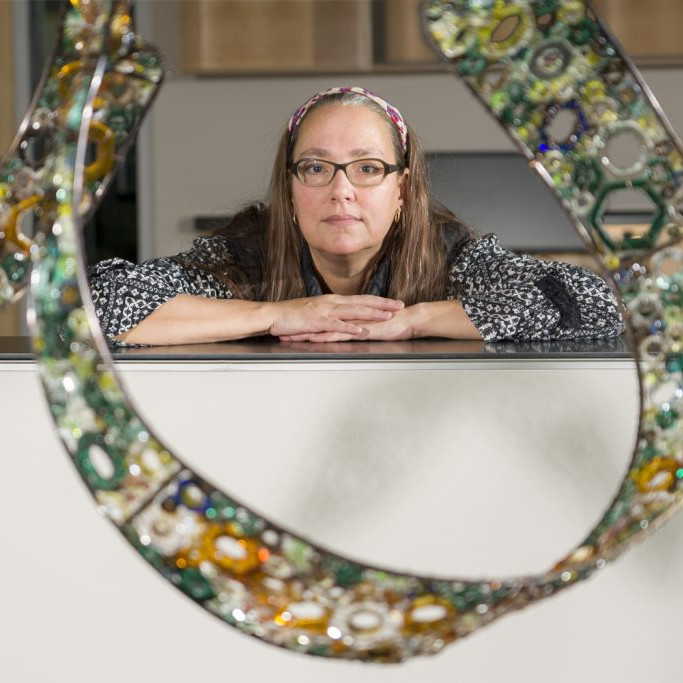Katharine Coleman MBE Glass Artist - Isle of Dogs, London, UK
Discuss the very close and precise position you take up in your studio to do your work?
I have a small studio, some 10ft x 9ft (3m x 2.5m), which neatly fits two benches, side by side, one slightly higher carrying my lathe – with a motor mounted under the bench – and the other bench is for drawing and drill work, as the working height/seating required for the latter is significantly lower. To the side of the lathe bench is a small shelving unit on which my spindle rack sits so that I just have to reach out to change spindles. Behind the seating is a shelving unit that takes a few boxes of kit – my little Glastar flatbed grinder, my gilding kit, teaching gear etc etc. I work long hours in the studio, usually at least ten, so the seating has to be just the right height so that I don’t get back or shoulder problems, especially when lifting heavier glass pieces.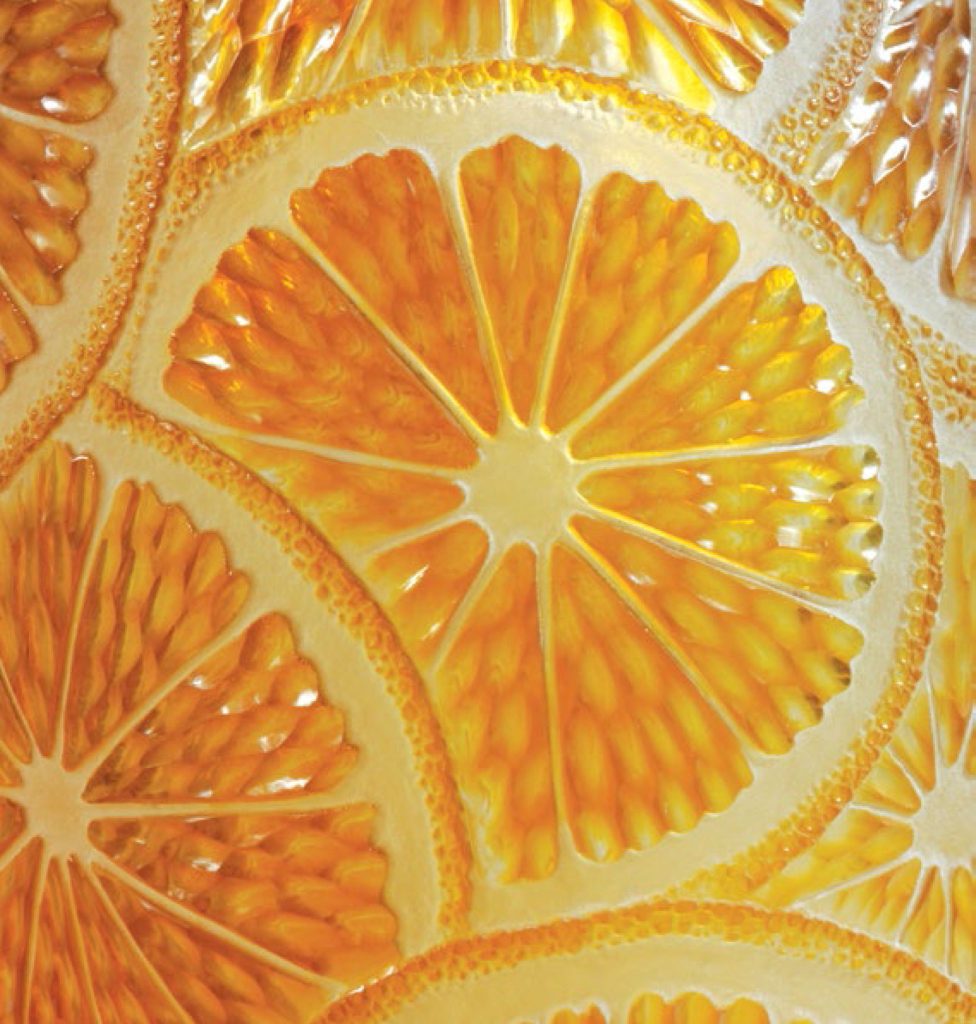
Marmalade, detail
Expand on the importance of consistent light and tools in your art practice.
Light: The best light of all is natural daylight (but not flickering sunlight), which is hard to get, especially here in London in winter months and sunlight is insufficiently consistent. I therefore generally use a couple of halogen flood lights and extra angle poise lamps which can be adjusted according to the job in hand.
Tools: I don’t economise with tools. If I need more copper wheels, I take the time to make them the right size. It’s such a false economy trying to make do with slightly the wrong size of wheel. If I sell a good piece of glass I might invest in another sintered diamond wheel or some more good Polpur polishing wheels from the Czech Republic. Using Polpur wheels instead of cork and pumice for polishing work with the lathe is much quicker and more efficient as there is no mess or loss of detail. A small Polpur wheel may cost about 20 $NZ, but it saves time and earns its keep. For the drill, once the diamond coated burs are worn, I put them aside for delicate work and use fresh ones, which is possibly extravagant but gets the work done.
When I first started learning wheel engraving, I had to beg my teacher at Morley College (Peter Dreiser) to teach me as he had some 12 students to deal with (all drill engraving) in two hours on Monday mornings and afternoons and copper wheel engraving is very teacher-labour intensive. The idiot student botches a wheel profile in seconds. So he insisted I get a lathe for myself at home. Like learning the piano, practice is key with wheel engraving. The Spatzier lathe, motor and 75 spindles cost more than a small car in 1985, the German Mark was high and the British pound sterling depressingly low. But it is probably the best investment, tool wise, I ever made. It is still in perfect condition and has increased in value now that Richard Spatzier GmBh have ceased trading.
You came to your art as an older student expand on this in relations to your family life and their support in your aims.
I came to glass engraving by chance. I had recently lost my post at London University where I was teaching in a junior capacity and researching in the Geography Department (Spanish American colonial urban development) and I just happened to glance up and see some amazing work by Alison Kinnaird in a gallery window in London when I was taking my small children to a museum behind the Royal Academy. There was just one place available on the only glass engraving course in London, so I persuaded my husband to take a day’s leave to look after the children so I could camp outside the college doors to ensure being through them first and enrol on the course. My husband was very supportive about my learning as it took a few years to become competent with the lathe and we were not wealthy. The children sometimes got frustrated if I spent too long engraving rather than playing. For several years I worked part time as a secretary to avoid having to take boring commission work, runs of paperweights and celebration glass. I preferred just try to make my own designs, sell them and with each sale, get a fresh piece of glass blown.
Commissions play a large part of your work, discuss one commission and why it is so meaningful to you?
No, I find commissions difficult. They usually require extra expensive special glass blowing (over and above the annual week spent blowing my glass stock for the year) and so I only take one a year these days. I prefer to work for myself.
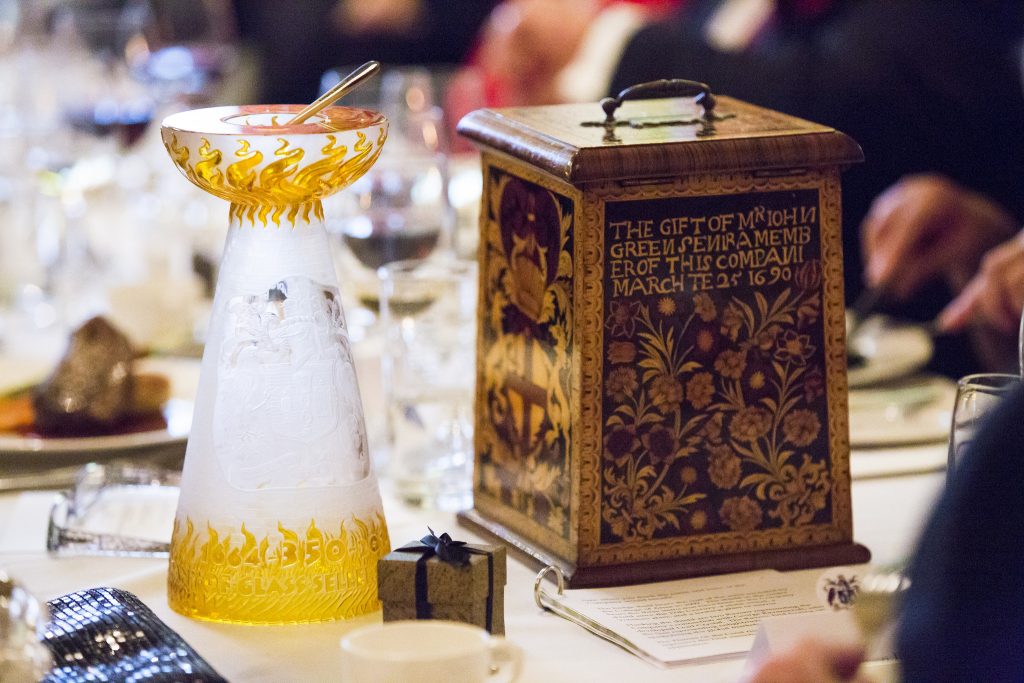
Salt Cellar with the Poor Box
However I have done some interesting commissions for the royal family and livery companies in the City of London. I was recently commissioned to make a ‘salt’ for the Worshipful Company of Glass Sellers, the livery company that covers glassmaking, for the Master to have on his high table at special dinners in the Mansion House (home of the Lord Mayor of London) and other grand events.
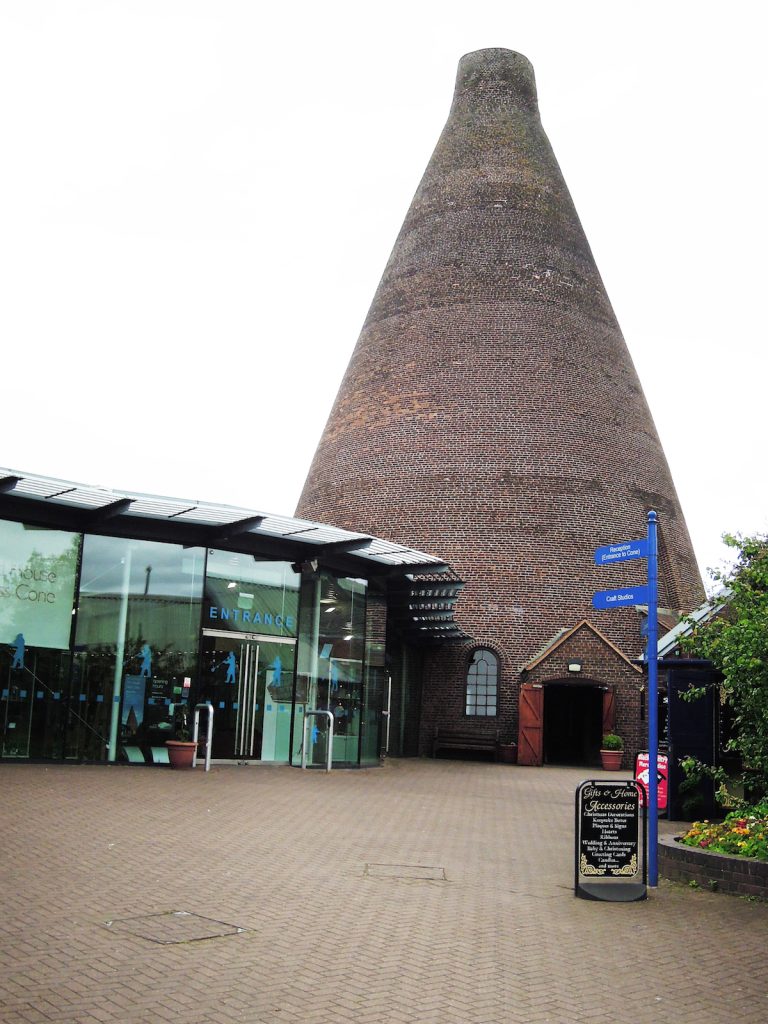
Traditional factory cone in Stourbridge, The Red House Glass Cone
I designed it as a cone in the form of a traditional glass factory with the flames below and then, from the coat of arms of the company, a sun shining from above as the bowl sitting on the top, holding the salt.
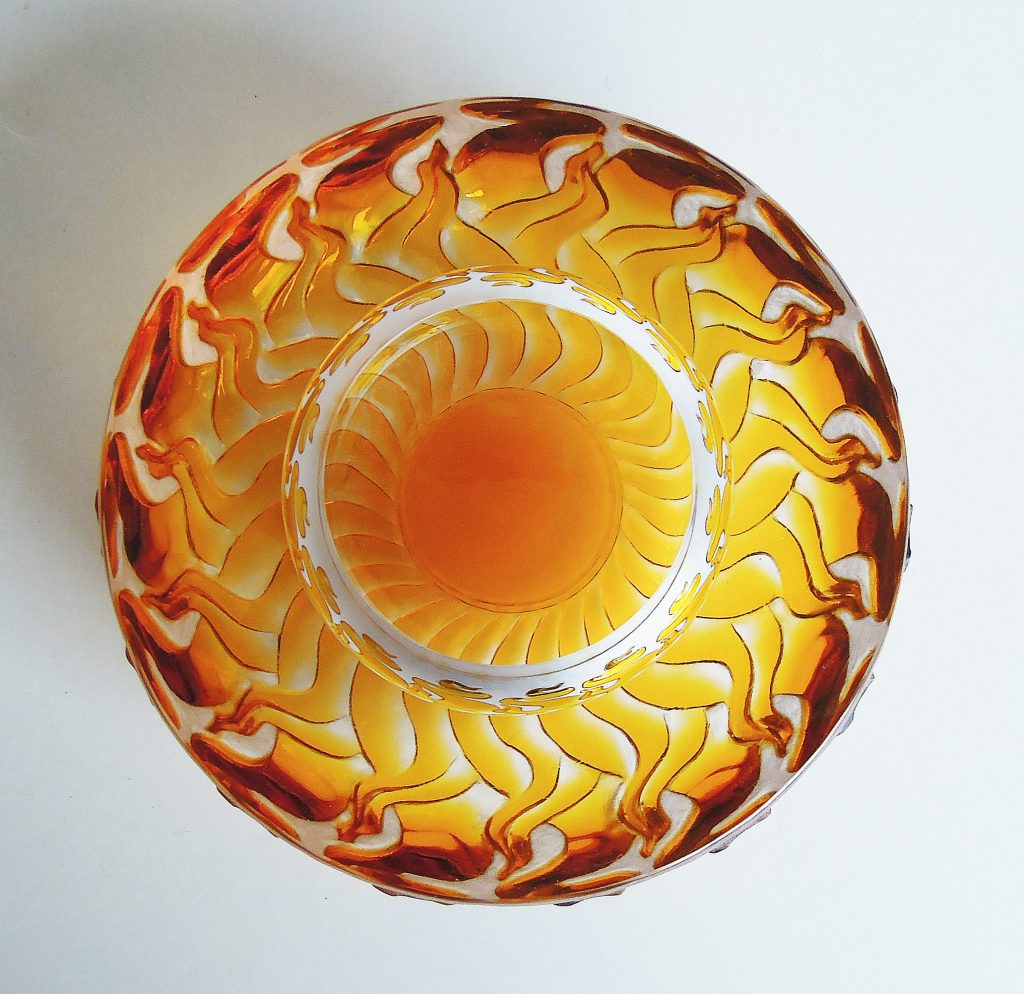
Top of the Glass Sellers Salt, 4cm H x 12cm D
The glass had to be blown in two pieces and then cold laminated together which was very risky for such a high profile piece. The specialist who did the gluing for me used a little too much UV cured glue which began to crack the top off the whole piece as it dried. I rushed down to Bermondsey in South London to Peter Layton who has a diamond saw to cut the pieces apart to stop the crack any further. The whole piece had then to be re-engraved and the top hand ground to fit the base once more, only two weeks before the presentation – not an experience I would wish on anyone.
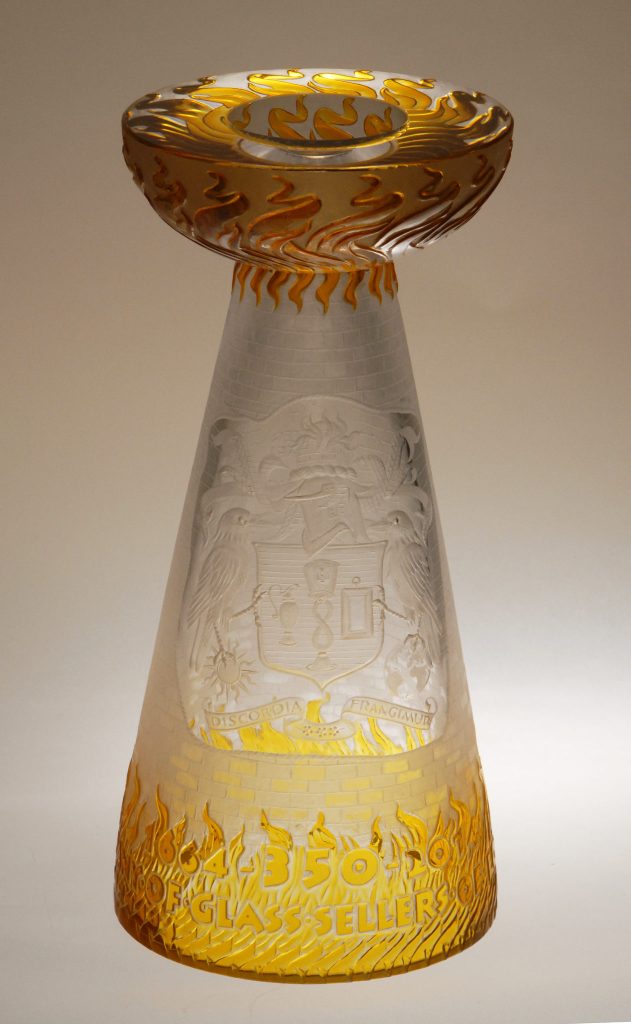
Glass Sellers 32cm
Can you briefly explain the technique of a glass engravers work?
There are several techniques used by glass engravers: point engraving, using a diamond or tungsten point in a scriber by hand; drill engraving, using a pendant drill or micromotor with diamond coated burs or stones; wheel engraving, a scaled up version of the same, using interchangeable wheels mounted on spindles on a lathe; sandblast; acid etching and now, water jet. I seldom get the chance to use any of the last three. I don’t particularly need sandblasting for the scale of my work is relatively small. I use diamond or stone wheels or burs to cut away the clear or coloured glass surface to make my design and then, if polishing is required, finer stones and polishing compounds. There is an excellent book by Peter Dreiser & Jonathan Matcham: Techniques of Glass Engraving, 2nd edition, A&C Black, London 2006 which describes most of these techniques in detail and with exercises. The second edition is better illustrated and updated from the original first edition which was published in the 1980s.
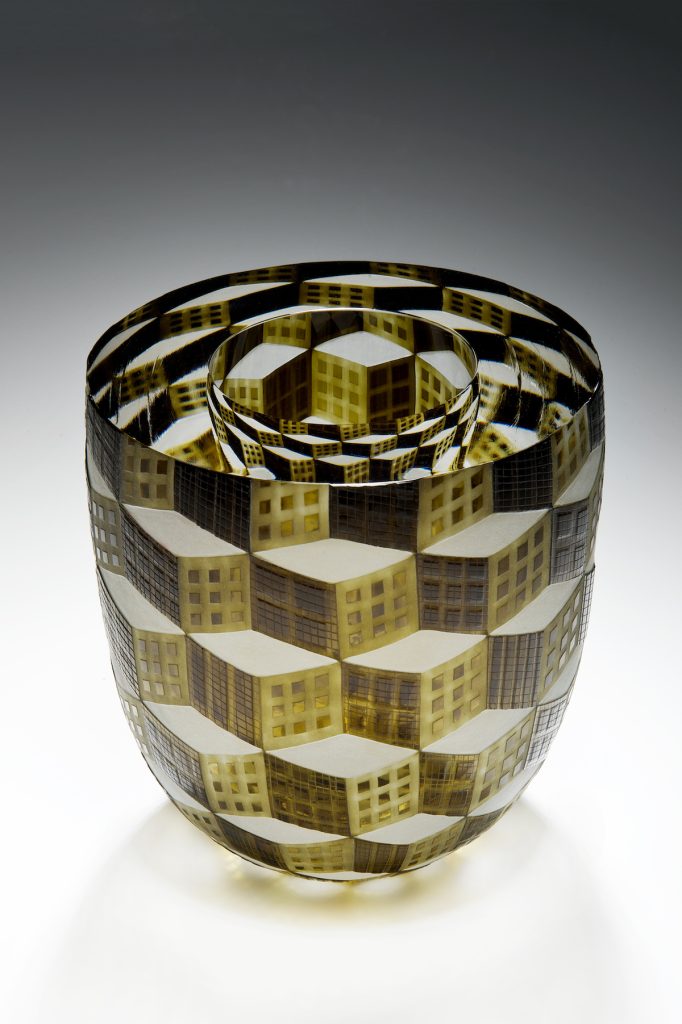
City of London, 17.5cm x 16cm, Photo Ester Segarra
Discuss the collaboration with other artists in your work?
I could not work without the help of the expert glassblowers Potter Morgan Glass in Cornwall.

Andy Potter blowing my work with the help of a nearby farmer, Jim
They realise my designs in lead crystal with colour overlays. Andy Potter is an overlay expert, using the Swedish method, fastidious in the quality of the lead crystal. These days it is rare to find a glassblower prepared to work in lead crystal in a separate pot and he is also prepared (at a price) to anneal the glass for a week afterwards to make sure it is absolutely secure. My designs usually require very thick glass which takes a long time to anneal. I send him drawings in advance so that he can get the requisite coloured glass from Gaffer or Reichenbach and do all the compatibility tests. I like to be in the studio when he is blowing my work so that we can adjust the shape and size of the glass as it is formed. Sometimes there may be a bubble which needs cutting out and the change in the glass size or shape can be an improvement. When the glass is annealed, I take it to Steve Frey in Frome in Somerset, marking up where to cut the tops off the blown glass, leaving it with Steve for most of the polishing work. Steve has factory scale polishing wheels and used to work as the main cold worker for Dartington Crystal, later for Neil Wilkin. He is a master of coldworking and polishing and although he is expensive, it saves me a great deal of time and tears trying to do the work myself. I have learned to my cost in the past that trying to save money on blowers or polishers is a totally false economy.
Can you show a piece blown by Sonja Klingler and the variations that you embellish to their base work.
When I began having glass blown for me rather than buying glass from galleries and shops, I used Neil Wilkin Glass. Sonja Klingler was one of his assistant blowers at the time. When Neil went to Australia, Sonja set up a small studio in Frome nearby Neil’s old studio and I still occasionally use her to blow small work for me as she is so fastidious with small pieces, such as little Japanese tea bowls. Her furnace is not sufficiently reliable for blowing large work and she would need considerable help with such pieces, but she still blows small bowls and plates for me from time to time. I do not embellish her base work, she blows to my design when I need glass from her.

Tea Bowl 10cm x 11cm, blown by Sonja Klingler, with green overlay
Your work is not traditional which usually comes to mind when the words, glass engraver comes up – discuss.
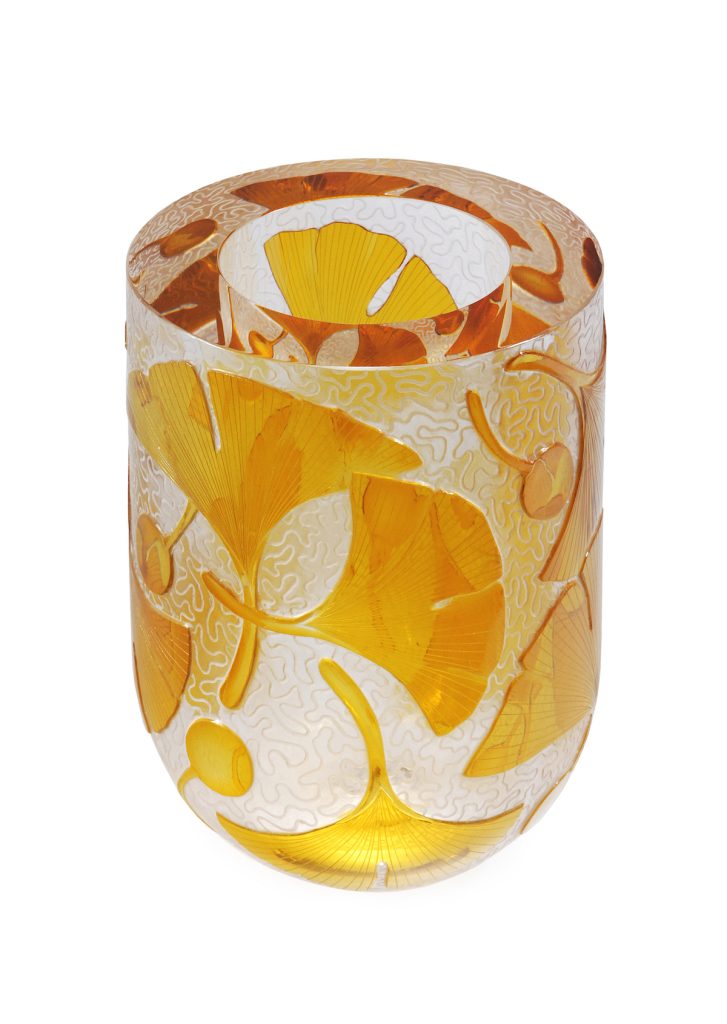
Golden October, 17 x 11.8cm
Many people still hold a preconceived idea of glass engraving – both within and outside the studio glass world. Glass engraving has a particularly bad reputation with the latter, for being highly figurative on clear glass, photographic likenesses of animals, lettering, florals, often on commercially sourced or factory made glass. This doesn’t mean that such work is inherently bad – there is never an excuse for a weak design or poor execution. I just simply prefer to work with colour overlays on more sculptural pieces that have been blown to shapes I like and which refract the designs right inside the glass itself.
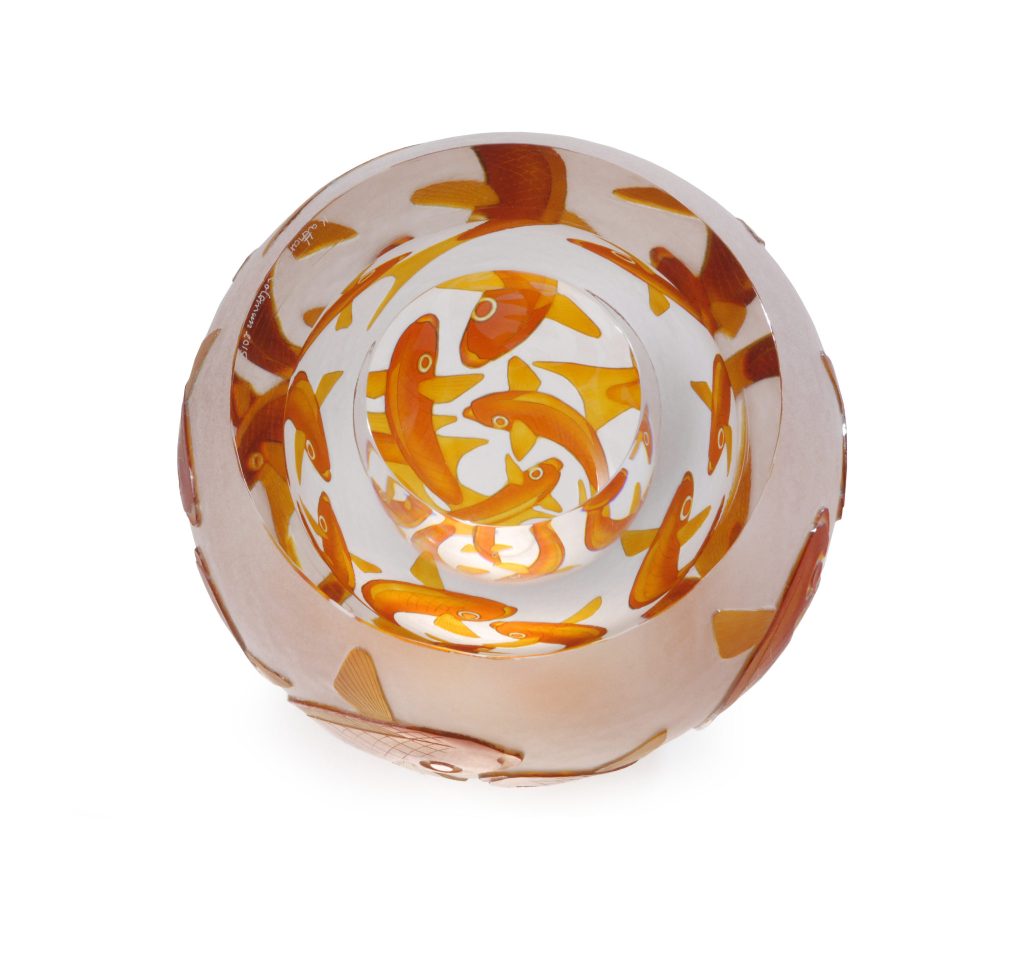
Fishbowls, 12.2 x 15cm
Sadly the poor reputation of the traditionally focused work of glass engravers has done little to save the craft from near oblivion. There is little demand for such work and none of the colleges in the UK teach engraving any more, possibly because of this. I teach at the college where I learned but it is only on an evening class, hobby level for most students’ interests.
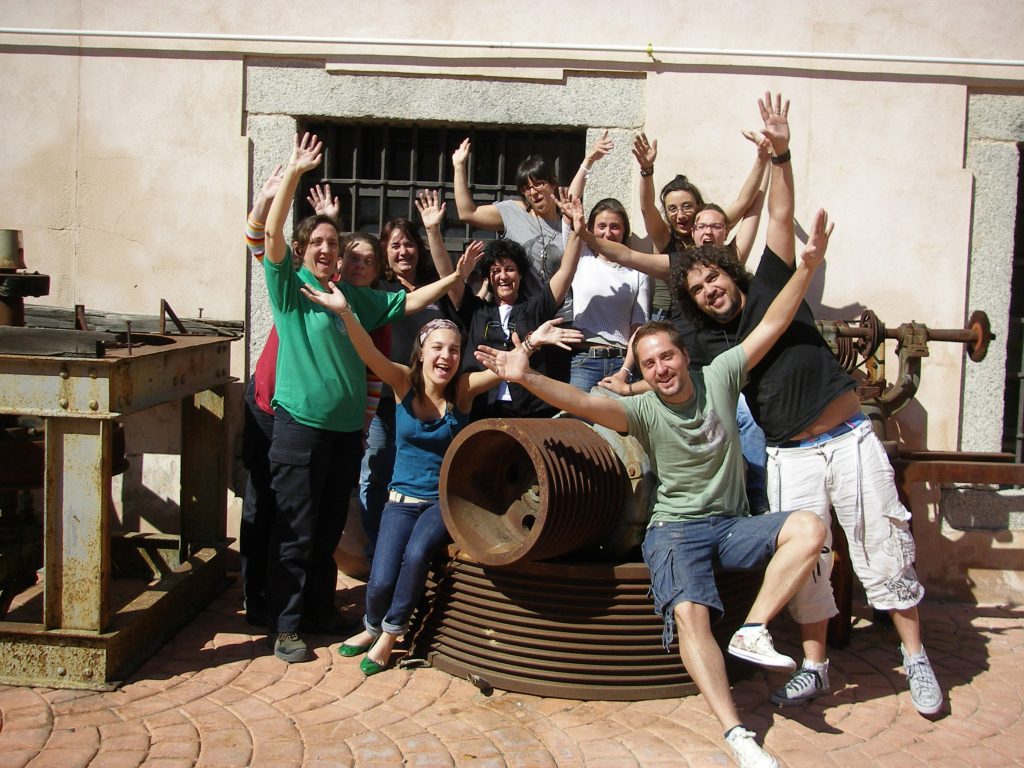
There is a small group of European glass engravers who also believe in contemporary glass engraving, freed up from the need to be figurative per se and in a contemporary context. The Glass Engraving Network was formed in 2013 and we keep in touch through our Facebook page: www.facebook.com/glassengravingnetwork. During 2015-2016 we organised a touring show of work by some 31 contemporary engravers from many European countries that went to galleries and museums in seven countries over eighteen months and this did a great deal to arouse interest in the potential that glass engraving genuinely has to offer contemporary studio glass.
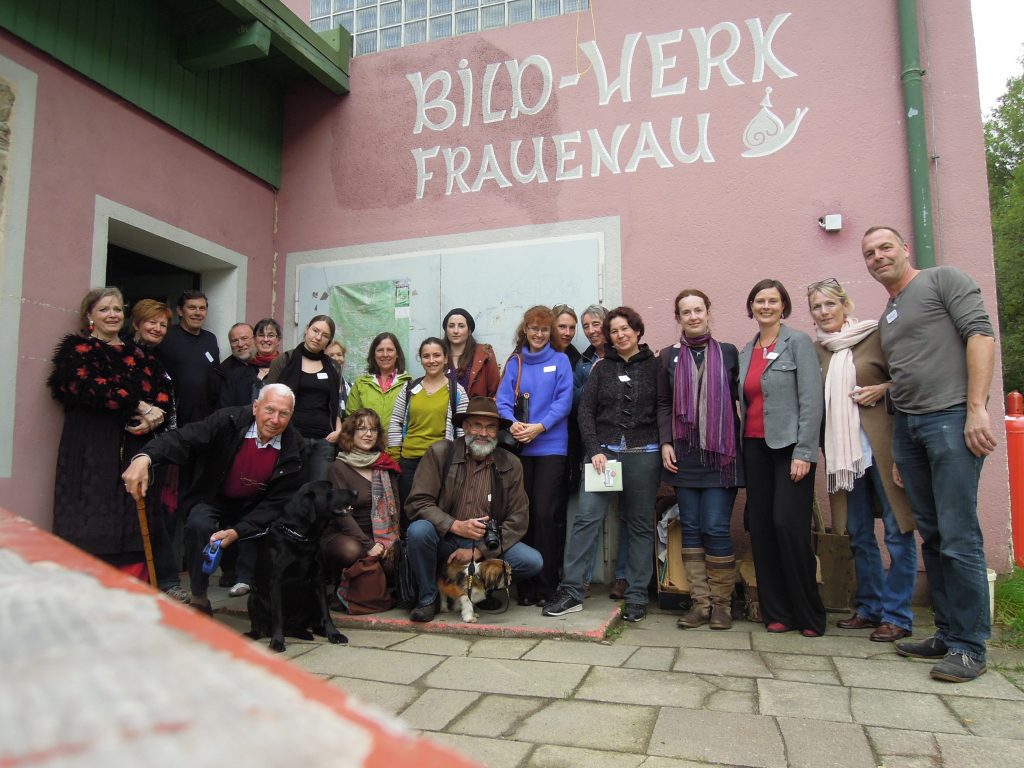
General Meeting, September 2013
Can you take us through the process of Marmalade?
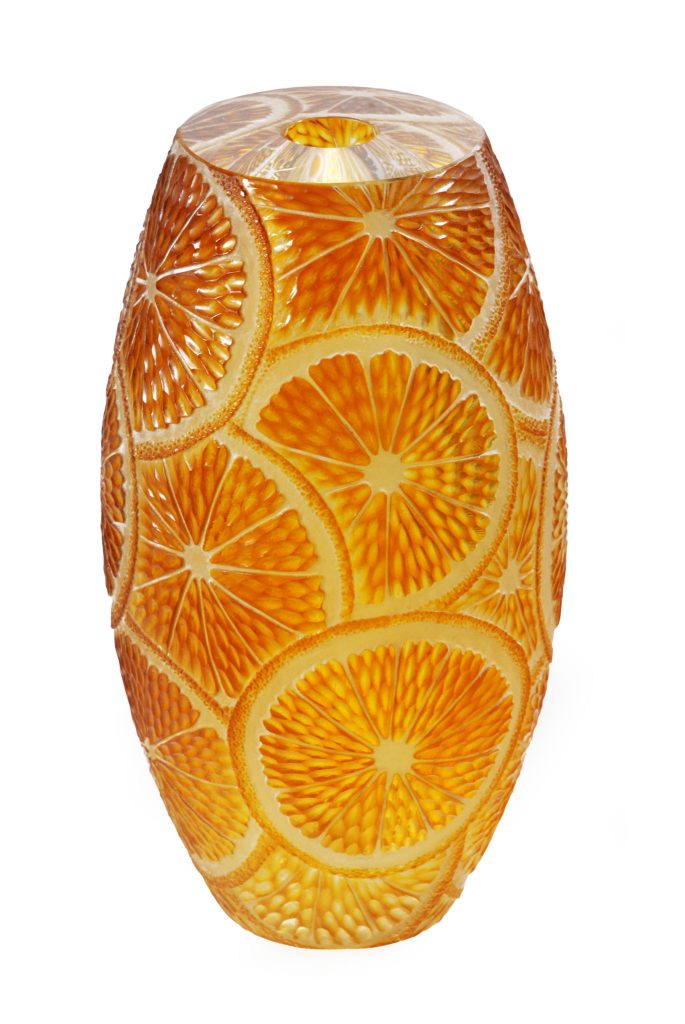
Mamalade, 20 x 11cm
For this I first made several drawings until I was sure of the shape and colours required. I sent a technical (cross-sectional) drawing, specifying overlay colours, to Potter Morgan Glass who blew the vase with a double colour overlay – Gaffer Extra Ruby (a favourite ruby) over a Kugler yellow topaz – over clear lead crystal (24% lead, Dartington cullet). Each overlay was ca. 0.5mm thick and it was beautifully blown. The top of the vase was cut off and polished by Steve Frey. Then I drew on the design with permanent ink pen, adjusting until I was satisfied with the scale of the design. It is useful to stand back, away from the glass and decide on the effect of the design at this stage as it is too easy when working so close up to the glass to get the design too small and too fussy. I marked the main outlines on the glass with a small diamond bur in a drill, just to fix the design before cutting on the lathe. Each small juice sack was cut as a simple nested olive battuto with a diamond wheel and then individually prepolished, using an aluminium oxide or corundum stone wheel before Polpur polishing each one out, finishing with cerium oxide. Engraving the peel was much more difficult and time consuming, requiring very small circular polished zest detail. Where the glass appears white, it is simply where the colour overlays have been entirely removed back to the clear glass or crystal.

Please introduce us to the video The Art of the Wheel – Katharine Coleman.
This video was filmed by another cold worker, Anthony Scala, who is also a very talented film maker. Anthony works part-time for Peter Layton at London Glassblowing. He made the film in my small studio as part of the celebration show for Peter’s 80th birthday. It shows me working at my lathe, talking rather a lot, mounting a fresh copper wheel on a steel spindle, knocking the end of the spindle over the hole in the copper wheel to form a rivet. The oil and grit mix makes a grey mess on the glass which many people find disconcerting – it is what puts students off wanting to learn full copper wheel, which is a shame as one can have many more copper wheels than expensive diamond ones and copper is so much more versatile, though slower.
The Art of the Wheel – Katharine Coleman.
You also teach, discuss the importance of passing on technique and the love of your art.
The late Peter Dreiser spent a great deal of time and patience teaching me glass engraving with the lathe and I am very anxious to pass on what I learned from him. Quite a lot of the technique can be achieved with a drill but on a smaller scale. It is really good to be able to run in and out of both techniques. Learning lathe engraving takes a little time – not a lot – to start with and for this reason, a couple of hours a week is not a good way to pick it up. I do prefer teaching students intensively for a couple of weeks or so at a summer school so that the student can get beyond the panic of not seeing the point of contact between glass and wheel, can start making predictable, confident marks from which to start building up simple engraving patterns and shapes. Now that I am getting older, I find that it is often – but not always – the older students who are more patient and interested in such skills. Glass engraving requires intense concentration which is often a welcome surprise and distraction for those who come from busy lives.
Why do I prefer it to sandblast and drill engraving alone? Wheel engraving is more versatile, it requires one to simplify complexity and look to the kernel of a design, it is crisper and sharper and smoother and finer. It is not faster, it is not easier, but when I see a beautiful piece of wheel engraving from any century or studio, it gives me a shiver of appreciation that the flatter, overworked fussiness of detail in drill work fails to inspire.
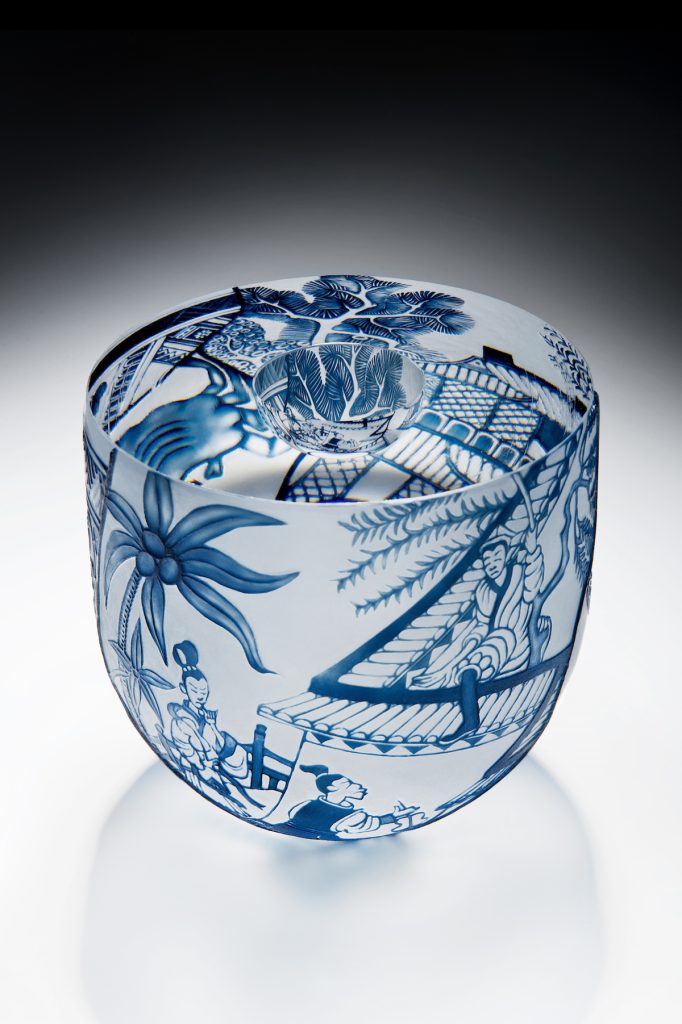
Broken China Bowls, 14.4 x 14.8cm, photo Ester Segarra
Glass engraving with the wheel is older than glass itself, being a variation in the techniques traditionally used for cutting hardstone seals and treasures. Throughout history, from Roman times onwards, when glass engraving began, the techniques have nearly died out and then, centuries later, enjoyed a renaissance. I fear copper wheel engraving techniques are certainly in danger of dying out for a bit. But there will always be a corner somewhere in the world, where there is a patient enthusiast keeping the flame alive.
Question: Do you have much contact with Australian and New Zealand glass engravers?
I only know a few, all of them amazingly good artists. I was lucky to visit the late Anne Dybka at her home in The Rocks, Sydney on my one and only visit to Australia a few years before she died. Although well known in Australia, her work was also admired greatly over here in Europe. There has been very little Australian glass shown in the UK for some time now. I wish we could see more Australian and New Zealand engravers’ work. Alasdair and Rish Gordon from Western Australia have been well known here – partly because they studied originally at Edinburgh before migrating to Scandinavia and then settling in Australia. Alasdair’s classic wheel work and Rish’s sandblast techniques are highly admired, but we could do with seeing more of it. One of the most promising glass engravers of all must be their son, Kevin. His work is astonishing, original and just knocks the spots off most of what’s happening here.
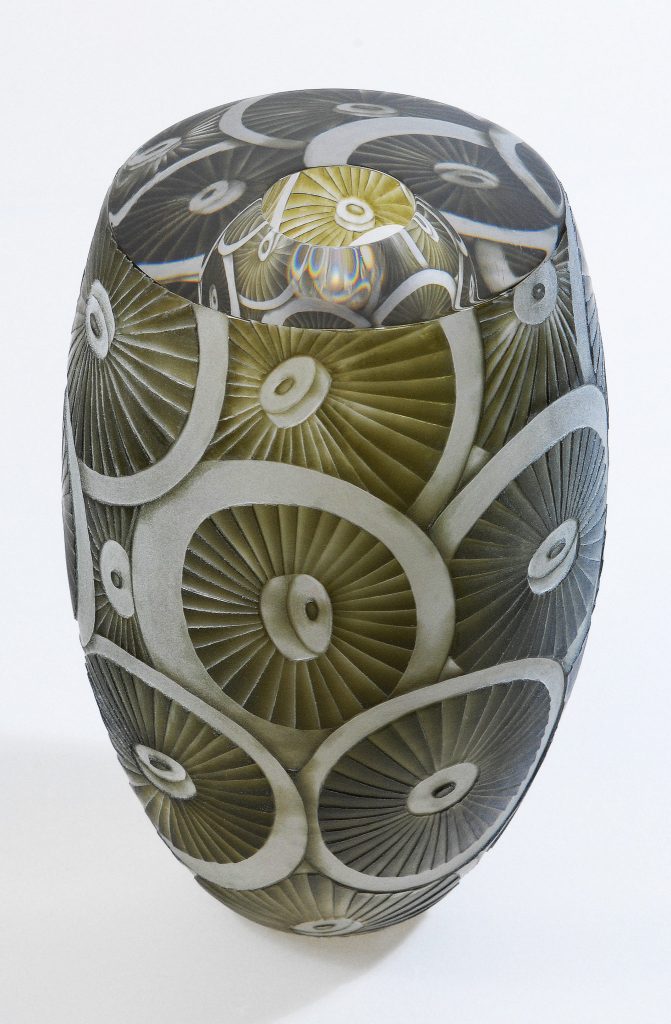
September Mushrooms, 17 x 11cm, Photo Ester Segarra
Contact details:
Katharine Coleman
email: Katharine@katharinecoleman.co.uk
Katharine Coleman, Isle of Dogs, London, UK
Interview by Deborah Blakeley, January 2018
Think a colleague or friend could benefit from this interview?
Knowledge is one of the biggest assets in any business. So why not forward this on to your friends and colleagues so they too can start taking advantage of the insightful information the artist has given?
Other artists you may be interested in:


